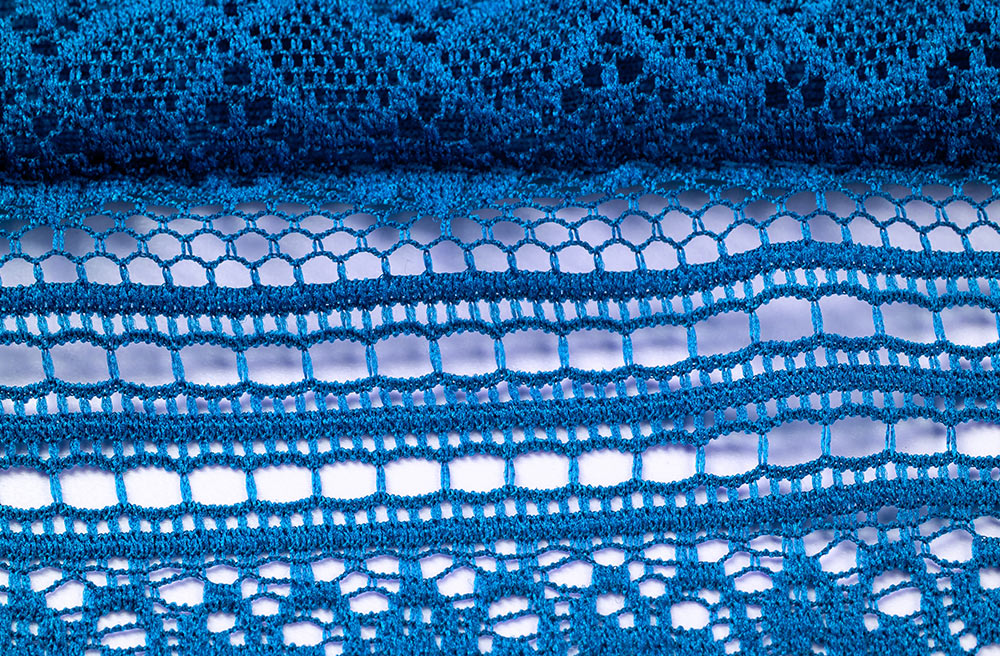
Tunisian crochet is a unique technique that bridges crochet and knitting, resulting in a fabric that showcases the best of both worlds—often called a hybrid craft, as it looks like knitting but is worked with a unique Tunisian crochet hook. Even the stitches have names taken from knitting, such as Tunisian Knit and Tunisian Purl Stitch. While you make interlocking loops with the crochet hook, keep these loops on the hook in one row and work it out in the other. The special crochet hooks are different than regular single-ended crochet hooks in the way that is of varying lengths that accommodate a vast number of stitches. There are options for interchangeable Tunisian crochet hooks that attach cords of different lengths to accommodate the stitches, very much like interchangeable circular knitting needles.
While Tunisian crochet is often associated with solid and dense fabrics, the world of possibilities expands further when you delve into the realm of lace Tunisian crochet stitches. You work with the basic Tunisian stitches and crochet techniques to create an open weave effect.
Getting Started with Lace Tunisian Crochet
Lacework is a pattern of artfully put holes in a fabric. These holes and a mix of stitches create an intricate design that works beautifully for sweaters, tops, tees, shawls, and home décor. With Lace Tunisian crochet, you take the unique artwork elegance to a new level by blending the texture of traditional Tunisian stitches with the grace of lacework techniques. The result is intricate patterns of holes and eyelets, allowing light to pass through and creating an ethereal effect.
Before diving into lace Tunisian crochet, it's essential to have a grasp of the basics of Tunisian crochet. Every row is worked twice: the foundation, where you pick the loops on the hook, and the return pass, where you work the loops. This also includes having the practice of basic Tunisian crochet stitches. You will come across the Tunisian Simple Stitch (TSS), the easiest of patterns where you simply make loops. Next, you will need an understanding of Tunisian Knit Stitch (TKS). Both these stitches serve as the foundation for creating lace Tunisian crochet projects. Like knitting and crochet, lace is paired with basic stitch patterns such as garter and Stockinette when you work with knitting needles and double crochet (DC) or treble crochet (TR) stitches.
Yarn Over: To make a yarn over, move the yarn over the hook and then grab and pull the yarn through the work. You create a loop on your hook with the yarn linked to the base of the loop's front vertical bar (or leg). This means that the front leg of the loop on your crochet hook is linked to the next stitch you'll make.
Yarn Under: Much like yarn over, another technique for lacework is yarn under. When you move the working yarn under the hook, you make a yarn-under, then grab and pull it through the work. You create a loop on your hook that looks like a "standard" loop. But actually, it is something different. The loop has the yarn thread linked to the back vertical bar (or leg) base.
Increases in Tunisian Crochet: Tunisian crochet stitches are worked over two rows. While you work one stitch into two, increasing the count from the previous row or round, you need to do the steps in both the foundation and the return row. If you are following a pattern, you will have the information needed.
Decreases in Tunisian crochet: Like decreases in knitting or crocheting, in Tunisian crochet, decreases are worked by making two stitches as one. You need to work the stitch in both the foundation row and the return row unless specified otherwise in the pattern.

Things to consider when working on Tunisian Lace Crochet
- A bigger crochet hook size: Tunisian crochet fabric tends to curl and be dense. For the lace effect to work out neatly, you must pair yarn with a bigger hook. If you are working with a DK weight yarn, while the suggested sizes are 3.5mm (E) to 4.00 mm (G), it is recommended that you work with a crochet hook that is 5.00mm (H) to 7.00 mm according to your comfort level. Making a gauge swatch will assist you with planning out your project.
- Choose the Right Yarn: Opt for lightweight and fine yarn to ensure the lacework stands out. Silk, cotton, and bamboo yarns work exceptionally well for lace Tunisian crochet. Even if you choose wool or blends, avoid sticky yarns that tend to get bunched up together. The blocking process must be carefully chosen for pampering your yarn to bloom for lace patterns.
- Practice Tension Control: Achieving even tension is crucial in lacework. Be mindful of your tension, especially when transitioning between different stitches within a single row. The bigger crochet hooks, compared to the yarn, will assist with loose tension, but to be uniform, you have to practice.
- Blocking: Blocking your finished project is essential to reveal the true beauty of lacework. Gently pin your piece to the desired dimensions and steam or wet block to open up the lace and even out stitches.
- Experiment with Colors: Lace Tunisian crochet lends itself well to experimenting with color combinations. Variegated yarns or gradient color changes can enhance the visual impact of your lacework.
As you venture into this world of delicate Tunisian lace crochet stitches, you'll discover the joy of creating ethereal fabrics that are both visually stunning and rewarding to make. Whether you're a seasoned Tunisian crocheter or a novice eager to learn, lace Tunisian crochet invites you to express your creativity and create timeless pieces with a touch of elegance.
Explore the Tunisian craft with premium crochet hooks from the Lantern Moon Collection. The interchangeable Tunisian crochet hooks are crafted from ebony wood by skilled artisans. The handcrafted tools and even the Bequest Set of interchangeable Tunisian crochet hooks are a worthy investment for crocheters of all skill levels.
